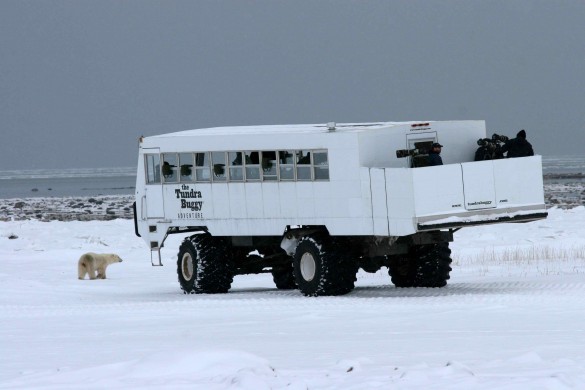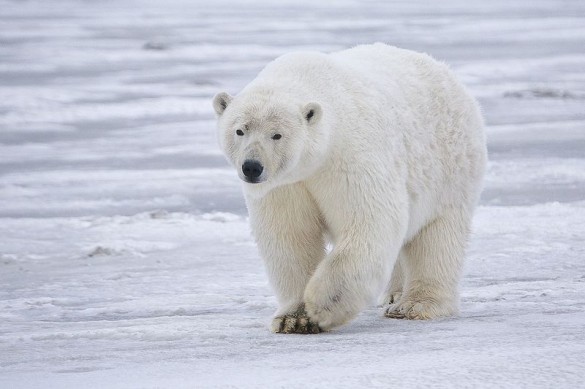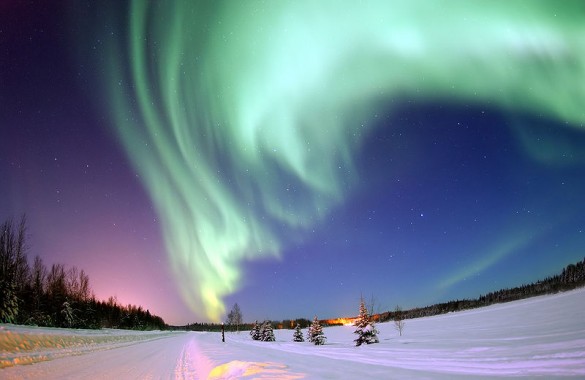While on a ski vacation in Northern Canada last winter my dear wife exclaimed as we were driving along to our lodging after a enjoyable day coursing down the slopes, “Let’s go see the polar bears. Let’s put aside skiing for a couple days and drive to the town of Churchill as I heard it was the Polar Bear capital.”
According to our Canadian travel booklet: “Every October onwards the vicinity of the town of Churchill in Manitoba province is host of 1000 polar bears, more or less. They make their way to the Hudson Bay when the waters freeze over usually around in mid-November where they hunt fur seals, their staple diet. The polar bears will remain on the ice building up body fat, until the middle of the summer months when the ice starts to break up.”
I hesitantly approved of her plans, reminding my wife there are no through roads to the town and we have to go by plane, leaving our rented car at the airport at Winnipeg. Putting aside my doubts and at the last week of our vacation we put away our skis and we traveled to Churchill, Manitoba to see the polar bears. Well, it was worth it….
Tourists can safely view polar bears from specially modified buses known as tundra buggies driven within established trails and it is the best way to view and photograph the polar bears of Churchill; Tundra Buggies are built very high off the ground to ensure the safety of guests. If required Tundra Buggies can also tow additional modules containing bunks, showers, and dining facilities for overnight stays on the tundra. October and early November are the most feasible times to see polar bears when the bears wait on the vast peninsula until the water freezes on Hudson Bay. Visitors are given leaflets on how to be ‘Bear Aware’ to inform them of the polar bear’s habits and curiosity as another safety precaution.

The polar bear is a bear native largely within the Arctic Circle encompassing the Arctic Ocean, its surrounding seas and surrounding land masses. It is the world’s largest land carnivore and also the largest bear outside of the Kodiak bear of Alaska. Male polar bears may grow 10 feet tall and weigh over 1400 pounds and females reach seven feet and weigh 650 pounds. In the wild polar bears live up to age 25. Despite what we think, a polar bear’s fur is not white. Each hair is clear hollow tube. Polar bears look white because each hollow hair reflects the light. On sunny days, it traps the sun’s infrared heat and keeps the bear warm at 98 degrees F (even when they are resting). Polar bear fur is oily and water repellent and their hairs don’t mat when wet, allowing the polar bears to easily shake free of water and any ice that may form after swimming. Polar bears have wide front paws with slightly webbed toes that help them swim; they paddle with their front feet and steer with their hind feet. Paw pads are covered with rough surfaces to help prevent polar bears from slipping up on the ice.

The town of Churchill located on the shores of Hudson Bay, about 650 miles north of Winnipeg: the town and the surrounding area are steeped in history as old as Canada. Archaeology in the area shows evidence of human presence dating back 4,000 years. Churchill, Manitoba, Canada, a town of approximately 1,100 permanent residents, stands between the western shore of Hudson Bay and the Churchill River. Whether you travel independently or as part of a package tour, the town of Churchill will serve as your main base camp. Although definitely “no-frills,” the town contains stores, services, restaurants, lodgings, and medical facilities necessary to service its permanent residents as well as visitors.
(The first European to explore “The Bay” was Henry Hudson in 1608.) The Prince of Wales Fort, built in the mid 1700′s by the Hudson Bay Company, sits just across the river, a solid reminder of the fur trade which first put Churchill on the map.
Churchill, Manitoba is a four season ecotourism destination of abundant sub-arctic attractions. Thousands of Beluga whales, which move into the warmer waters of the Churchill River estuary during July and August to calf, are a major summer attraction. Churchill is also a destination for bird watchers from late May until August. Bird watchers have recorded more than 270 species within the radius of Churchill, including Snowy Owl, Tundra Swans, Golden Plover Tundra Swan, American Golden Plover and Gyrfalcon. Plus, more than 100 birds, including Parasitic Jaeger, Smith’s Longspur, Stilt Sandpiper, and Harris’s Sparrow, nest there.

The famous Eskimo Museum is one of the most comprehensive collections of Inuit artifacts and sculpture. The Northern Lights (Aurora Borealis) hit their peak in January through March. These magnificent displays can be viewed from anywhere in or around town. And outdoor adventure is readily available. Hiking tours, dog sledding, snowmobiling, kayaking, snorkeling, hunting and fishing are all at hand in Churchill.
There are no roads leading to the town of Churchill, so tourists, photographers, travelers, adventurers, and eco-tourists alike have to either fly from Winnipeg with airlines like Calm Air or Kivalliq Air who offer flights through Manitoba and Nunavut; visitors have the option of taking the train with Via Rail. The train can take anywhere from 36 to 48 hours, depending on the conditions, but they offer a great scenic view of the varying Manitoba environment.